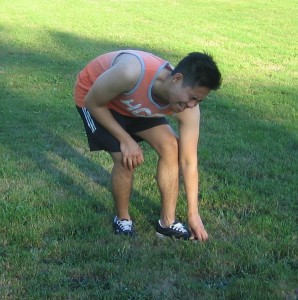Foot osteoarthritis is usually caused by mechanical wearing out of the foot joints. Early diagnosis and prompt treatment can greatly help in the management of the symptoms.
The cartilage which cushions and protects the ends of the bones forming a joint steadily wears out. This is due to the mechanical wear-and-tear on the joints of the foot.
Injuries can also lead to the development of osteoarthritis years after. Severe cases of fractures or sprains can result to osteoarthritis.
Irregularities with the foot structure and abnormal foot mechanics can also lead to the development of osteoarthritis. Those who have high arches or flat feet are at higher risk for foot osteoarthritis.
What are the signs?

The general signs linked with foot osteoarthritis include:
- Foot pain and rigidity in the affected foot
- Inflammation near the involved joint
- Reduced range of motion and difficulty walking
- Formation of bony protrusions
Management of foot osteoarthritis
The management of foot osteoarthritis are focused on reducing the symptoms. Both conservative and surgical options are available. The doctor might suggest one or more conservative options initially.
Some of the conservative options include:
- Non-steroidal anti-inflammatory drugs (NSAIDs) or analgesics to lessen the pain and swelling
- Shoe inserts for added support or cushioning
- Braces to limit movement or prevent deformity
- Orthotics
- Physical therapy or exercises
- Steroid shots directly into the joint
- Dietary supplements
In case the conservative options fail to work, the doctor might suggest surgery. Depending on the affected joint, arthroscopy, arthrodesis or arthroplasty might be recommended. The aim of surgery is to reduce the pain and restore function.
